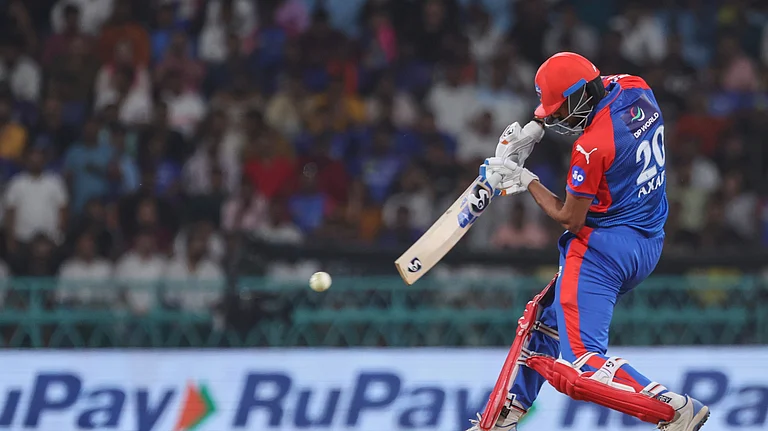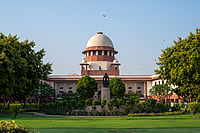The origin of the conflict between the Judiciary and the Executive over the process of appointment of judges at various levels can be traced to 1970 when the Supreme Court struck down the Indira Gandhi government’s move to abolish privy purses (Madhav Rao Scindia v Union of India, 1970) and nationalise private banks (RC Cooper v Union of India, 1970). While the court did not hold that the abolition of privy purses or the nationalisation of banks were unconstitutional per se, the two judgments were perceived as an attempt to impede the economic reform policies of the government. Earlier, when courts had struck down key social and economic reform legislation, the Constitution was amended to nullify the judgments in question.
However, in the 70s, certain sections of the ruling Congress party argued that judges (by virtue of their social class) were insufficiently ‘committed’ to constitutional values and the solution, therefore, was to appoint judges who were more in tune with those values. The impact of this approach was immediately seen in the next decade—the Union Government demanded (and got) a greater say in the appointment of judges. It even chose Chief Justices of India (CJIs) based on whether they had decided cases in favour of the Union government.
In the fifty years since, irrespective of which party was in power at the centre, there has been an unending tug-of-war between the Judiciary and the union government over the appointment of judges. This conflict has been fought over one fundamental question—who should appoint judges to the Supreme Court and the High Courts? One side argues that judges should have the final say; the other argues that the government should also have an equal, if not greater, say in the process. The latest iteration of this debate was kicked off by public statements by the Union Minister for Law and Justice, Kiren Rijiju, and Vice President Jagdeep Dhankhar calling for a rethinking of the Collegium system, and responses from the judiciary and lawyers asserting the need for the system.
Yet this debate proceeds on the wrong assumption that ‘who’ appoints judges is the most important aspect of the process and will determine whether or not the judiciary will be independent. There is no basis to this assumption and I would argue that the ‘how’ aspect of appointment, that is the procedure itself, is just as important, if not more, than the ‘who’.
Two healthy conventions were established by the union government and the judiciary during Nehru’s prime ministership in this matter. One, the CJI would always be the senior-most judge of the SC and two, the CJI’s recommendations on a nominee to the judiciary would always be followed.
Both conventions were disrupted during the 70s and 80s, largely by the Indira Gandhi-led Congress government, although the seniority convention in appointing CJIs was restored after the Emergency. The other, giving primacy to judges’ views in matters of appointment, was restored in 1993, following the Second Judges case (SCAORA v Union of India). Here, a nine-judge bench of the Supreme Court overturned the precedent set in the First Judges case (SP Gupta v Union of India, 1981) which had held that the government was not bound by the views of the CJI in the appointment of judges. In the Second Judges case, not only did the court hold that the government was bound by the advice of the CJI but such advice had to be rendered by the CJI after consultation with the two senior-most judges of the Supreme Court, creating the first version of the Collegium system of appointments that is currently in vogue.
Since 1999, the appointment of judges to the Supreme Court and the High Courts has been governed by the Memorandum of Procedure drawn by the union government consequent to the judgement of the Supreme Court in the so-called Third Judges case of 1998. This case gave final form to the Collegium system of appointment of judges, increasing the Collegium of judges from three to five and clarifying many aspects of the process.
However, governments across party, remained unhappy with the system, believing that their say had been unconstitutionally limited. This state of affairs was sought to be rectified by the National Judicial Appointments Commission (NJAC) brought into effect by the 99th Amendment to the Constitution. Yet, this never took effect as the Supreme Court struck down the amendment (SCAORA v Union of India, 2015) as being an assault on the independence of the judiciary and, therefore, a violation of the ‘basic structure’ of the Constitution. The judgement is not without its problems and risks becoming an impediment to any meaningful reform of the appointments process itself.
The NJAC, in my view, was also a fatally flawed piece of legislation. It was drafted primarily to address the ‘who’ aspect of the appointment process. Its solution was to add the union law minister into the commission along with judges and two ‘eminent persons’. The NJAC Act (which was also struck down) contained precious little about the need for transparency in the process or criteria for appointment of judges, leaving much to be decided by ‘regulations’ framed by the commission. Its constitutionality notwithstanding, it was full of contradictions and also cut the state governments entirely out of the appointment process for high court judges.
Yet, even while striking down the NJAC (by a majority of 4 to 1), the court acknowledged the problem with the collegium system of appointments. To quote Justice J Chelameswar (who dissented), the proceedings of the collegium were “absolutely opaque and inaccessible both to public and history, barring occasional leaks.” After striking down the NJAC, the Supreme Court, in the same case, sought suggestions on improving the collegium system and proposed making amendments to the Memorandum of Procedure, specifically on aspects of transparency, criteria, a mechanism to address complaints and a permanent secretariat to assist the collegium. While a number of suggestions were made by the court, no change has taken place in the Memorandum of Procedure.
On the other hand, after the NJAC judgement, the Collegium system has itself come under stress as the union government has found ways to subvert the process with little protest from the judiciary (until recently). Nominations by the Collegium have not been acted upon in a timely manner, resulting in nominees withdrawing their consent for being appointed. When the Collegium sent across a list of names to be appointed on the same day, the government selectively appointed some, ‘rejected’ certain names and appointed others at a later date, thereby changing the seniority of the judges. All of this is contrary to the Memorandum of Procedure, making one wonder whether the Collegium system of appointments is still in vogue or if it has been replaced by a ‘search and selection committee’ system.
That said, the current debate over ‘who’ should appoint judges does not address the key problems with the appointment system: a lack of criteria for selection, reasonable timelines and transparency in the process. Proponents of the Collegium system insist that it promotes the independence of the judiciary. Such an argument conflates the individual independence of a judge with the independence of the judiciary as a whole. Involvement of the judiciary in the appointment process can protect the latter but it cannot ensure the former. A judge’s independence while functioning cannot be guaranteed if the process of appointment is shrouded in secrecy. At the same time, as the Supreme Court noted in its recent order in Advocates Association of Bengaluru v Barun Mitra, the lack of clear timelines and processes deters competent candidates from putting themselves through the process. All this ultimately erodes the public’s faith in the judiciary itself.
As welcome as the debate over the Collegium system of appointments is, it would be unfortunate if the debate remained limited only to the Judiciary and the Executive. The general public, in whose name the executive governs and the judiciary wields its constitutional powers, must assert itself in the matter. It is not about choosing one side or the other—the public must demand a role for itself in the appointment process. Whether it is through the articulation of clear criteria for appointment, greater transparency in selection, or even a seat at the table in decision-making, the appointment process must involve the public. This, in my view, is the only way to take the debate forward and strengthen public confidence in the judiciary’s independence and its functioning.
(This appeared in the print edition as "A Question Of Procedure")
(This article has been written with research assistance and inputs from Shailee Chandra, an intern at Vidhi)
(Views expressed are personal)
(The writer is co-founder of the Vidhi Centre for Legal Policy, Delhi)























